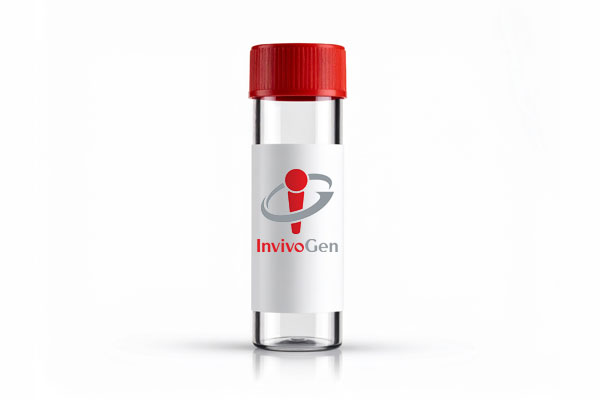
Adju-Phos® adjuvant
-
Cat.code:
vac-phos-250
- Documents
ABOUT
Aluminium phosphate gel | Th2 Response
Adju-Phos® adjuvant is an aluminum phosphate wet gel suspension. It induces a Th2 response by improving the attraction and uptake of antigen by antigen-presenting cells (APCs). It can also activate innate immunity pathways triggered by pattern recognition receptors (PRRs).
In contrast to Alhydrogel®, Adju-Phos® particles have a negative electrical charge at pH 5-7 and thus are well suited for adsorption of positively charged antigens (e.g. antigens with isoelectric points above the pH of formulation).
Adju-Phos® adjuvant is sterilized by heating and aseptically filled.
Note: Adju-Phos® is a registered trademark that belongs to Croda and is registered in a large number of countries and regions worldwide.
All products are for research use only, and not for human or veterinary use.
SPECIFICATIONS
Specifications
1:9 - 1:1 (Adju-Phos®:antigen)
Al(OH)x(PO4)y, Amorphous aluminium hydroxyphosphate
Sterility guaranteed
Pyrogenicity and pH tested
Aluminium content: 0.45%-0.55% w/w
pH: 6.0-7.0 (at the time of production)
CONTENTS
Contents
-
Product:Adju-Phos® adjuvant
-
Cat code:vac-phos-250
-
Quantity:250 ml
Shipping & Storage
- Shipping method: Room temperature
- Room temperature
- Do not freeze
Storage:
Caution:
Details
Adju-Phos® adjuvant is an aluminium phosphate wet gel suspension. Aluminium adjuvants, comprising Adju-Phos® and Alhydrogel® (aluminium hydroxide), are the most commonly used class of adjuvants [1]. Both products increase Th2 antibodies but do not promote significant Th1 cellular responses [2].
These adjuvants improve attraction and uptake of antigen by antigen presenting cells (APCs) [2]. It has been suggested that the antigens adsorbed on the aluminum salts are presented in a particulate form, making them more efficiently internalized by APCs. The main difference between the two aluminium salts is their point of zero charge (PZC), the pH value at which the surface of the adjuvant has a net neutral charge.
The PZC influences the adjuvant’s ability to adsorb and release antigen. For example, when the pH is maintained at 6-8, which is normal during vaccine production, Adju-Phos® particles have a negative electrical charge and thus are well suited for adsorption of positively charged antigens (e.g. antigens with isoelectric points above the pH of formulation) [1].
In contrast, at neutral pH Alhydrogel® particles are positively charged and thus readily adsorb negatively charged antigens [1]. Several other factors significantly change the adsorption capacity of both Alhydrogel® and Adju-Phos®, including molecular weight of protein antigens, sodium chloride, phosphate buffer, denaturing agents, and size of aluminum particles [3]. The adsorption capacity varies from 0.4 to 0.6 mg of Antigen per mg aluminium on Adju-Phos® adjuvant [3].
Another difference between these two salts is that following injection, Adju-Phos® adjuvant dissolves more readily than Alhydrogel® adjuvant [4]. Adju-Phos® adjuvant is made by Brenntag Biosector, a leader in the global vaccine adjuvants market with a long history of producing high quality products. Aluminium phosphate adjuvants are commonly used in diphtheria, tetanus, pertussis (DTP), hepatitis B (HBV), Polio and Haemophilus influenza type B (HIB) vaccines.
Adju-Phos® adjuvant is used in multiple commercial vaccine formulations [2-5].
1. Mold M. et al., 2016. Insight into the cellular fate and toxicity of aluminium adjuvants used in clinically approved human vaccinations.. Sci Rep. 6:31578.
2. Coffman R. et al., 2010. Vaccine adjuvants: Putting innate immunity to work. Immunity 33(4):492-503.
3. Marrack P. et al., 2009. Towards an understanding of adjuvant action of aluminium. Nat Rev Immunol. 9(4): 287-93.
4. Powell B. et al., 2015. Polyionic vaccine adjuvants: another look at aluminum salts and polyelectrolytes. Clin Exp Vaccine Res. 4(1):23-45.
5. Lindblad EB., 2004. Aluminium compounds for use in vaccines. Immunol Cell Biol. 82(5):497-505.
DOCUMENTS
Documents
Technical Data Sheet
Safety Data Sheet
Certificate of analysis
Need a CoA ?


